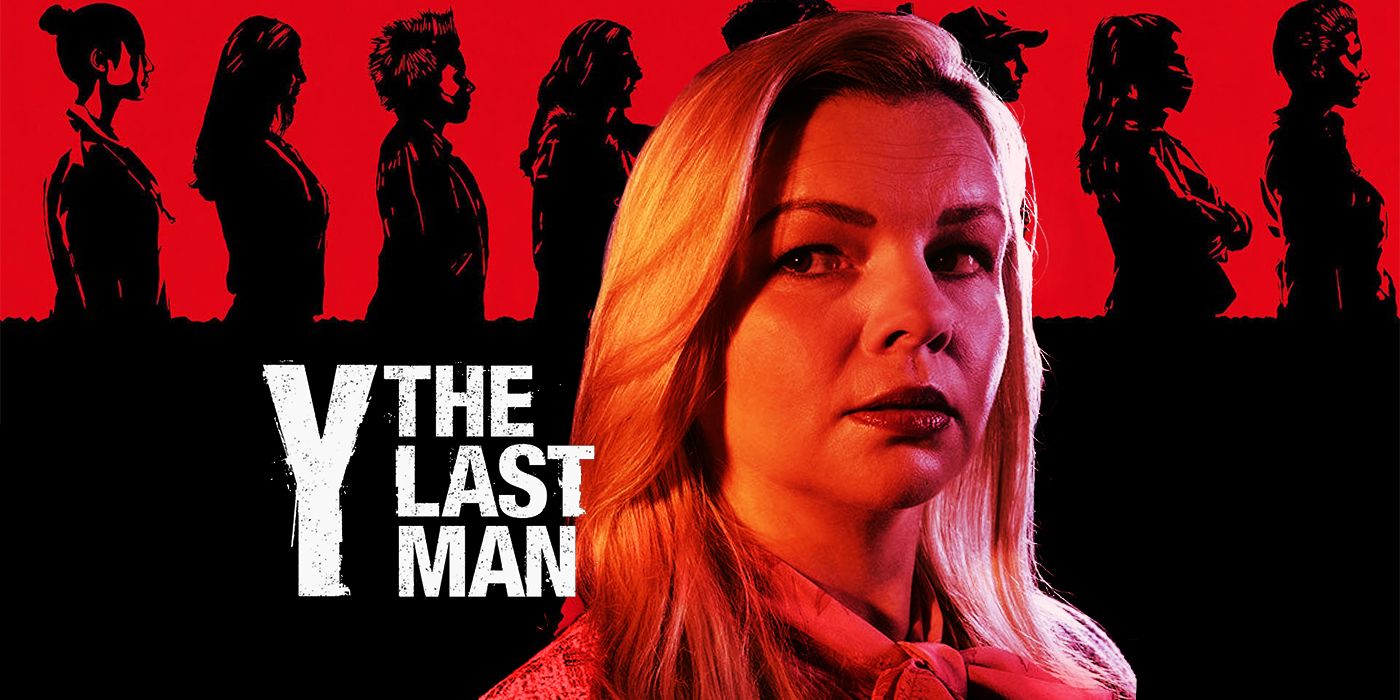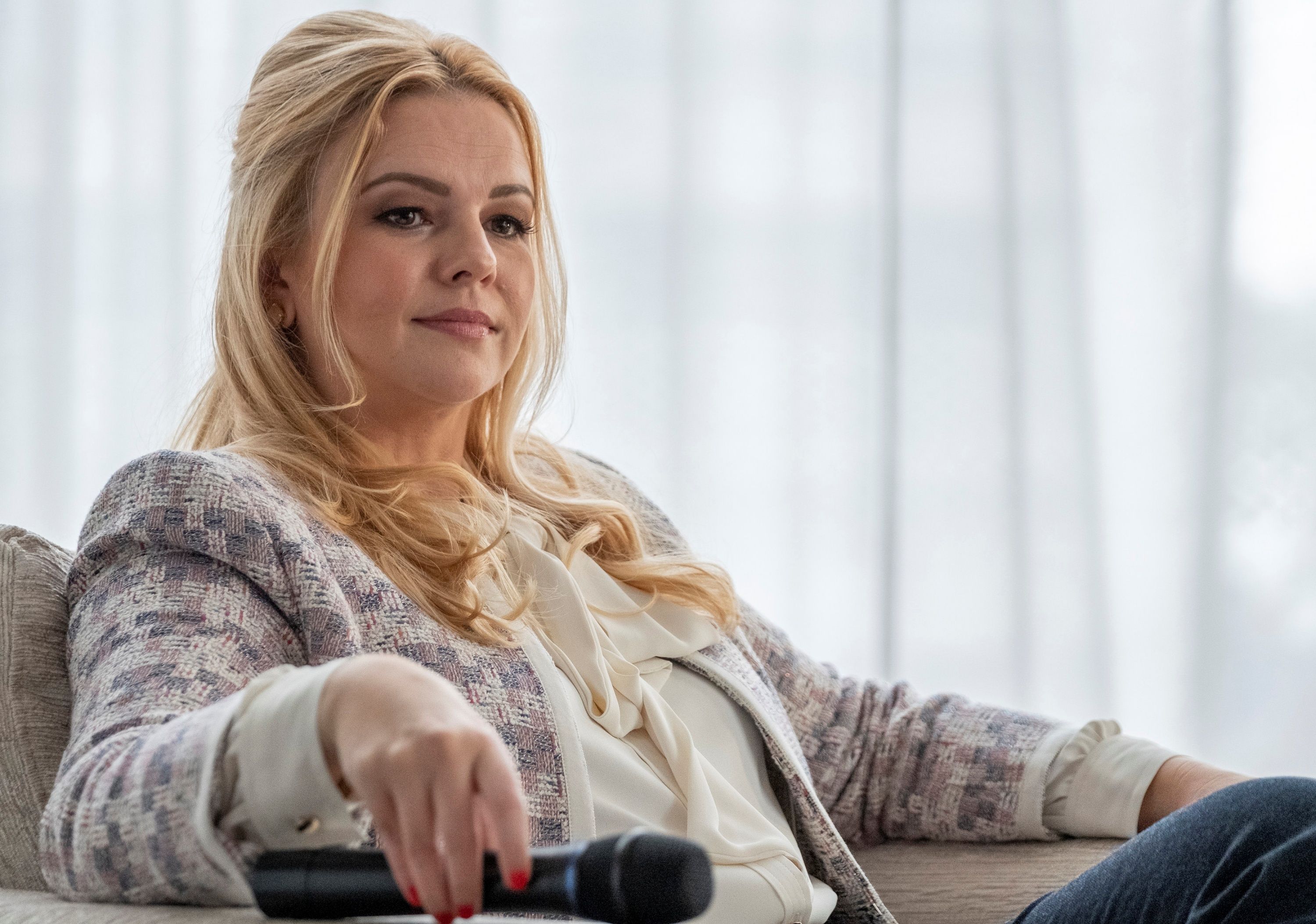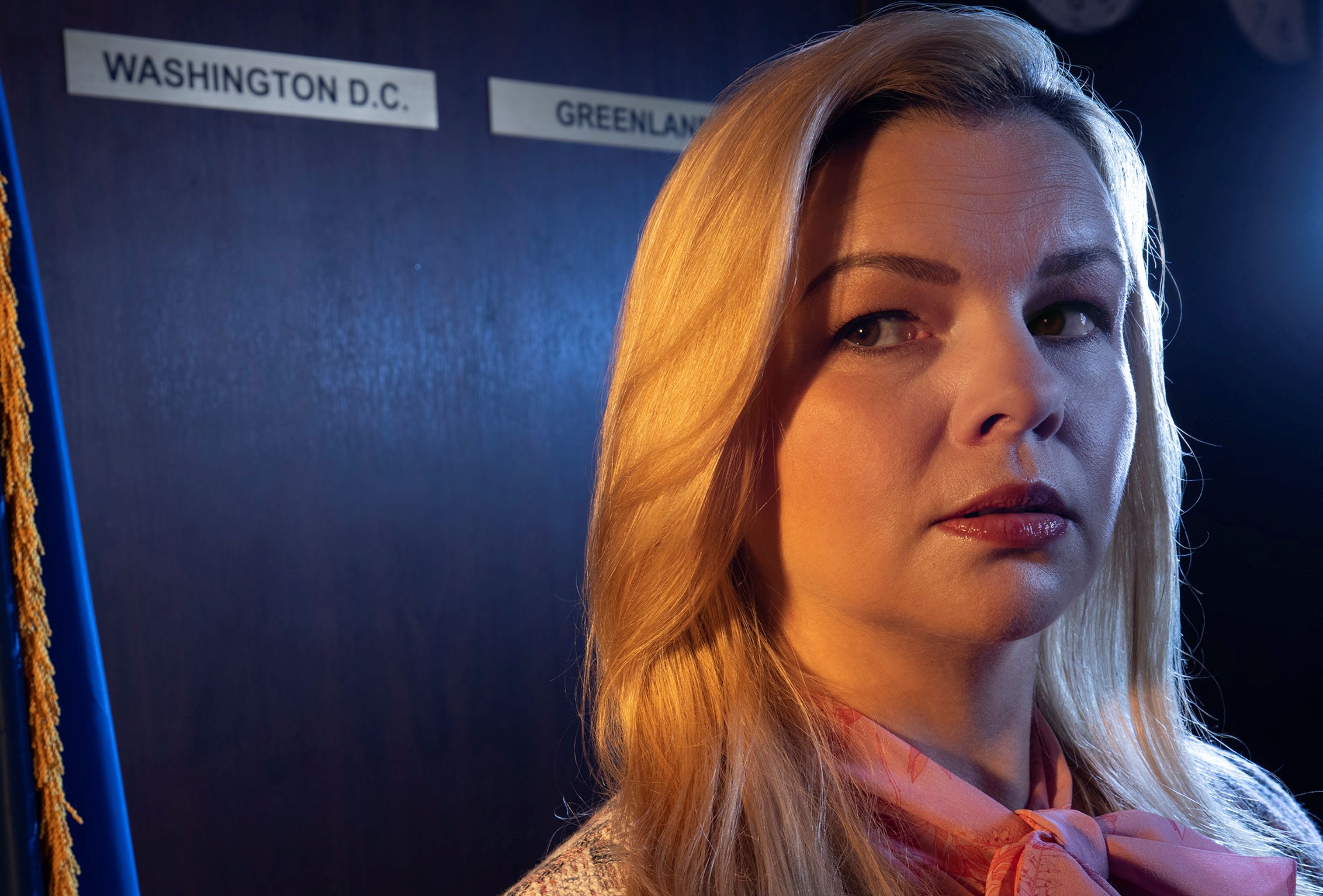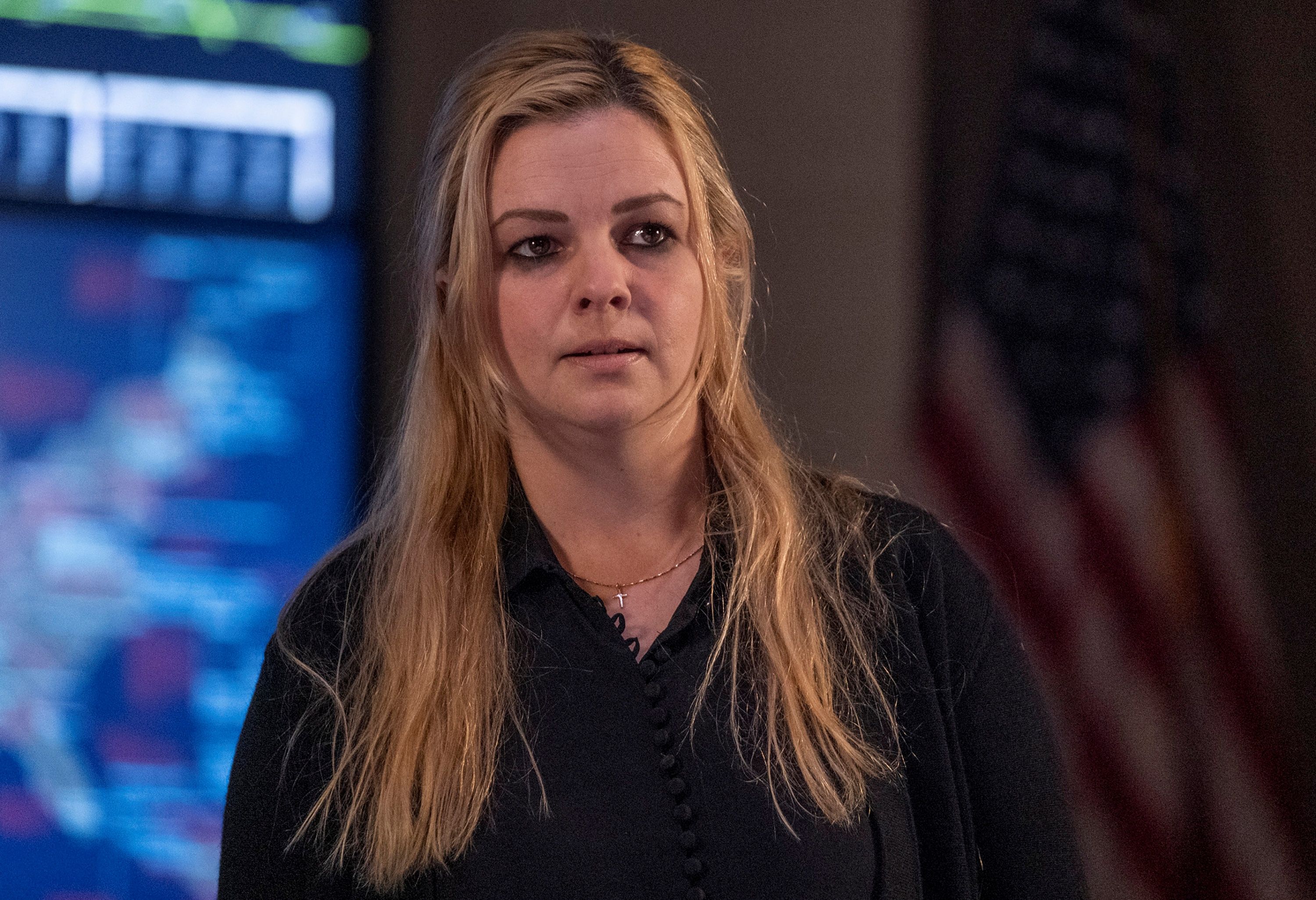From showrunner/executive producer Eliza Clark and adapted from the DC Comics title by Brian K. Vaughan and Pia Guerra, the drama series Y: The Last Man is set in a post-apocalyptic world after an event has wiped out every mammal with a Y chromosome, or so it seems until one cisgender man, Yorick (Ben Schnetzer), and his pet monkey inexplicably turn up alive. While the survivors in this new world are struggling to figure out what comes next, Agent 355 (Ashley Romans) suddenly finds herself in the unique position of being by the new president’s side, as she tries to get answers for why her son didn’t meet his demise.
During this 1-on-1 interview with Collider, Amber Tamblyn (who plays Kimberly Campbell Cunningham, a conservative personality who was the daughter of the president at the time of the event, losing not only her father but her three young sons) talked about when she first signed on to the project, the sense of freedom she felt in playing a character that wasn’t specifically in the comics, why she found this role so interesting, loving Kimberly with no judgment, what helped her understand what Kimberly was going through, and the potential for how the character could continue to evolve.
Editor’s note: This interview was done prior to the recent announcement that Y: The Last Man has been canceled by FX on Hulu and will not be moving forward with any further seasons there.
Collider: This property has been in development for quite some time, first as a movie, then as a TV show, but even the show has been evolving and taking shape for a fair amount of time. At what point in all of that did you sign on?
AMBER TAMBLYN: I’ve been attached to this project since the beginning of this developmental process, meaning that I know there were other companies and other networks that had been maybe developing it in the past. Maybe even, at one point, it was being developed for a film. I was signed on under Michael Green, when he was first a part of it, and stayed on with this new updated version that Eliza Clark created. So, I’ve been there from the very beginning, when Kimberly was pretty much just an idea. It was something that I had been thinking about and had a lot of ideas about, from the inception at the very beginning, especially because I knew we were gonna be able to create her from scratch. She wasn’t really a part of the comic book, although in my mind, I’ve always felt like Kimberly was one of the conservative women that appear in the first book, drawn way in the background without a speaking part, which I think is a fantastic metaphor for how she was realized.
Did you feel a sense of freedom because your character is not specifically in the comics?
TAMBLYN: Yeah, there’s a lot of freedom in that. For me, as an actor, I’ve never read any source material. I didn’t do that with Sisterhood of the Traveling Pants. That’s not how I like to go about creating a character. I don’t wanna be influenced or defined by source material, especially because I’ve basically been an empath for a living. That’s what I do. And so, any influence of any kind could move me off into a different direction that doesn’t lend itself to the character, or it might lend itself to the character, but I just don’t want to be influenced. I wanna be in the moment of what a writer is creating.
What were you most excited about with playing this character and what were you most nervous about when it came to portraying her?
TAMBLYN: I really haven’t been very interested in acting for probably close to eight years, maybe even a little bit more. I’ve been so steeped in my writing, writing books, directing my film, and much more in that world, which is where I think I thrive the most. I told myself, many years ago, that I really wasn’t gonna act in anything unless I felt challenged, in a good creative way. That’s how this happened. They came to me and they offered me this role, and I thought, “Huh, this is really interesting and this is unlike anything that I played before, in the 20 years that I’ve been an actress, so let’s see.” That was how it started. And then, there was a big period of time where, because of COVID and other circumstances, the show went down and it was redeveloped under Eliza Clark, for a couple years. In that time, Trump came into office and the world seemed turned upside down. The challenge was ever present, to bring her to life, to make sure that I wasn’t doing it out of a place that was vengeful or angry or shallow. Any kind of villain or complex character that is done within a two-dimensional space does no service to the character and does no service to the story. So, I was really grateful, when I was reading the first script and seeing what Eli and the writers were writing for Kimberly, and I knew exactly how to play that person. I knew exactly how to interpret her grief and make her both truly relatable and funny, and also truly terrifying, at the same time.
Can you play her without judging her? Do you have to like her? Do you just have to understand her?
TAMBLYN: I love her wholeheartedly. I do not play her with any judgment at all. I play her with a sincere understanding of what that life must be like for a woman like that. I have nothing but sympathy and empathy for that experience. That truth is what hopefully makes her feel so compelling because she feels very real and she’s relatable to the audience, who is confused by their feelings about her because she does seem off and she does seem scary. What she believes is maybe not necessarily what most people who are watching the show would believe, but somehow we still feel for her because we know that grief is a universal language and a universal experience. Part of the fun of the show is that it really walks this tightrope between reality and fantasy, in such a beautiful way.
Kimberly represents a very particular kind of woman, and I know you’ve mentioned looking at Meghan McCain and Ivanka Trump. What similarities did you see in them? Were there things that helped you understand Kimberly better by watching them, or is it less exact than that?
TAMBLYN: You know, it’s so interesting that, in the interviews I’ve given, yes I’ve mentioned Meghan McCain, yes I’ve mentioned Ivanka Trump, and yes I’ve mentioned the Joker, but what no one has seemed to print yet, which is odd to me, is that one of the biggest influences on Kimberly that I studied – and I studied hours and hours of interviews – were mothers of school shooting victims. I watched a lot of interviews with the mothers of Sandy Hook, and I watched a lot of interviews of the mothers of other American children who had died in school shootings. I studied how they held their grief in this centered, broken place that was not very emotional because it was beyond the point of an outburst. It was beyond the point of the heart breaking. It was also not broken, but there was this horrible crack in them that would probably never get fixed. That’s mostly what I studied and what I pulled from to create this character that feels very lost. It’s a very meta character because the world is in a state of unknown, and then Kimberly is in a state of her own unknown within the larger unknown of that world, if that makes sense. She’s lost within it because she’s completely lost her identity. With regards to Meghan, in the times of the greatest grief, I watched some of the footage of her at her dad’s funeral and I had even texted with her a bunch about it, years ago, when it was first being developed. I wanted to speak with her mom. I wanted to interview her mom, but then her father passed away and I felt it was respectful not to reach out again.
Kimberly is someone who has a certain look. For me, that was part of the creation of this character that is humorous in the show. You have somebody who’s still, despite a mountain of grief and the literal destruction of the entire world as we know it, walking around in high heels and pearls and with a full face of makeup on, and is still worried about her gray hair and getting her roots done. That is the caricature and the comical part of it that I think is so fun for people to watch. That’s where the Joker comes into play. It’s this idea of how we, as women, still wear our mask and still wear our disguise, even when the world is burning and disappearing. Just because we remove that which created the patriarchy, it doesn’t mean the patriarchy goes away. That gives you a little bit more depth of what that whole conversation is about.
It also feels like she’s doing all of that because it’s what she knows. Otherwise, how can you stop and think about losing your children like that?
TAMBLYN: Yeah, and the presentation helps her to feel like she’s still in the old world. Now, what happens when trauma is not processed and when your anger, your frustration and your sadness doesn’t come out, and when it’s all bottled up inside, that can and will create a monster, which is what you start to see with Kimberly. You see different versions and iterations of what a woman looks like when she really does finally come undone.
In the beginning, people really just write her off and don’t take her seriously, but now that she has nothing to lose, it feels like there’s this constant sense of danger lurking beneath the surface. She makes me nervous.
TAMBLYN: She should make you nervous. She makes me nervous. The little things that Eli and I came up with together, like stealing crayons for no reason, there are little moments that are placed throughout the season that give you a deeper understanding of this person and what she’s holding in. All of the women in the show, and the two men to a degree as well, are holding a lot in. No one is really allowing themselves to fully go there and to fully process what has just taken place, which makes for really good tension and really good TV. It’s fun to watch how these characters navigate each other, how they interact with each other, and what happens when they’re forced to face who they aren’t anymore.
Do you see Kimberly as a villain, or do you see her as someone who could just benefit from some really good therapy?
TAMBLYN: In the placement of the show, she’s a great truly polarizing figure and character. She has the capacity to represent a villain, and she does, but she also has the capacity to represent the grieving woman and mother. What is so compelling about her and also so disturbing to the viewer, is that you love her and hate her. There’s a duality within Kimberly that is very real and very present, and there’s something about her that feels secretive and unpredictable. That combination can be deadly.
It’s so interesting to watch some of her more manipulative moments, but then see her in a scene where she’s comforting someone through a miscarriage. It really makes you wonder if she’s always scheming and manipulating. Does she even realize that she’s being manipulative?
TAMBLYN: There is a lot going on in her life and for viewers to feel a multitude of feelings about. By the way, the great TV characters that are that, do that. Yeah. The Aunt Lydias of the world are people who are absolutely horrible and absolutely blind to how they walk and talk and manifest in the world. They use their power in bad ways. Their belief systems are aligned with themselves and themselves alone, and protecting themselves and saving themselves and no one else, and yet we love them and we cherish them and we understand. What’s great about television and really good writing, and especially the kind of writing that Eli and these writers have done, is that we’re not just looking at Kimberly. We know the bigger picture, so we see the pain from this really big macro place, in which we can overlook it and look from the top down. That perception, as a viewer, is really powerful, when we’re seeing and understanding the bigger picture of who a character is.
I went into this fully expecting to hate her and I love how confusing and frustrating she is, and how she makes me want to give her a hug at times.
TAMBLYN: That’s right. In one instance, she’s rubbing 355's arm and slightly touching her hair. And then, the next minute, she’s pushed up against a hallway door as children are running by, and you can’t help but see on her face, the pain and the loss and the grief. That’s what’s most beautiful about exploring any woman and the life of any woman. Pick one, and you will find a paradox in every woman’s life. You will find that women are imperfect and ugly on the inside, and ugly on the outside. That, to me, is what good storytelling is, when you are showing all of that, at the same time.
You talked about loving her and you clearly have an understanding of her, but at the same time, is she still difficult to play and embody sometimes? Do you ever just want to scream at her?
TAMBLYN: No, I don’t. In my line of work, your head is never there. I’m never separate from her when I’m playing her and when I’m in the moment of a scene. If anything, I’m trying to make sure that I’m not missing something and that exactly what I’m doing is how I want it to be interpreted on the screen, so that the viewer sees it the way I intended it to be seen. That is always the scariest thing about being an actor. You want the audience to feel exactly what you want them to feel, and you wanna make sure that it’s not lost in translation. So, no, that’s not a part of the work. That’s your job. The audience’s job is to feel for me, as Amber Tamblyn, and say, “Oh, God, this must be hard.”
What sort of conversations have you had with the creative team about where things are headed with the story and this character and where it would go next?
TAMBLYN: I know exactly where it’s going. We’ve had many conversations, and I’m very excited and hopeful that there can be another season – a second season, all the way up to five seasons. Eli has talked many times about wanting and seeing the greater vision of the show. I’m just extremely excited with the potential for where this character could go and where all of the stories could go.
Y: The Last Man is available to stream at FX on Hulu.




